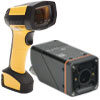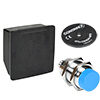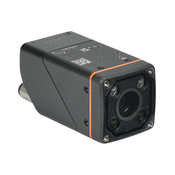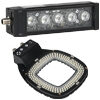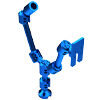 Cookies are not enabled on your browser.
Cookies are not enabled on your browser.Cookies are required for our site. Please enable cookies in your browser preferences to continue.
ADC will have normal operating & shipping hours Tuesday, Dec 30th.
- Barcode / RFID / Vision
- Bulk Wire & Cable
- Cables (Terminated)
- Circuit Protection / Fuses / Disconnects
- Communications
- Drives & Soft Starters
- Enclosure Thermal Management & Lights
- Enclosures & Racks
- Field I/O
- HMI (Human Machine Interface)
- Hydraulic Components
- Motion Control
- Motor Controls
- Motors
- Pneumatic Components
- Power Products (Electrical)
- Power Transmission (Mechanical)
- Process Control & Measurement
- Programmable Controllers
- Pushbuttons / Switches / Indicators
- Relays / Timers
- Safety
- Sensors / Encoders
- Stacklights
- Structural Frames / Rails
- Tools & Test Equipment
- Valves
- Water (Potable) Components
- Wire & Cable Management
- Wire & Cable Termination
- Retired Products
Configuration Utilities
- PLC Family Selector
- P1000 PLC Systems
- P2000 PLC Systems
- P3000 PLC Systems
- ProductivityCODESYS
- CLICK PLC Systems
- Do-more® BRX PLC Systems
- LS-Electric® XGB PLC Systems
- Productivity®Open Systems
- Datalogic® Safety Light Curtains
- LS-Electric® Servo Systems
- Nitra® Pneumatic Grippers
- Object Detection (Sensors)
- PAL Controller Configurator
- Precision Gearbox Selector
- Protos X® Field I/O
- Pyrometers Selector
- Quadritalia® Modular Enclosures
- Stellar® Soft Starters
- Stepper System Selector
- SureFrame T-slot Extrusion
- SureMotion® XYZ Gantry
- SureServo2® System Selector
- SureStep® Linear Actuators
- Timing Belts & Pulleys
- Werma® Stacklights
- ZIPLinks
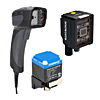
Barcode / RFID / Vision products are devices that identify a unique item, type of item, or code and convert this information into useful data. Examples of identification devices are barcode scanners, RFID R/W devices, and vision systems. Mounting systems are available for many types of devices.

This page will refresh momentarily.
Warning
Some of the selected facets have been selected by the {{ assistanceData.title }} Help.
Resetting/clearing ALL facets will end {{ assistanceData.title }} Help.
![Help icon]() Selection Assistance - {{ assistanceData.title }}
Selection Assistance - {{ assistanceData.title }}
Stride Interactive Product Tour Request
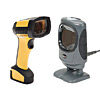
Barcode Scanners
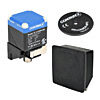
RFID Devices
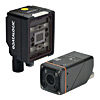
Vision
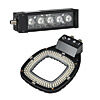
Vision Lighting
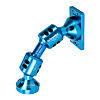
Device Mounting Systems
Barcode / RFID / Vision
With the ever-increasing pace of manufacturing processes and the logistics needed for on-time and accurate delivery, asset management with real-time inventory levels and product tracking has become a vital component of industrial automation. Identification systems are used to identify and track a product or part as it moves through the manufacturing and/or delivery process. This added visibility provides many benefits, including:
- Real-time data on the complete production process, from start to finish, providing insight into process improvements
- Efficient management and control of important assets
- Accurate tracking to ensure the right part/product gets to the right place
- Quickly locating products with quality issues in order to remedy the situation effectively
The three main types of technology used in industrial identification are RFID, vision systems, and optical identification, with barcode scanners and RFID devices being the most prevalent.
- Barcode scanners are optical code-reading systems that will recognize coded labels placed on products/parts. They provide a reliable means of product tracking where a clear, direct line of site exists between the scanner and label.
- For applications where there is no direct line of sight, where a greater amount of identification data is required, or where the stored ID data needs to be changed frequently, RFID systems should be employed.
- To check the quality of a finished product or verify an object's alignment, vision sensors can compare a real-time captured image of a product to the taught data and determine if the product passes or fails inspection.
For part listing and specifications, go to Shop Now
Barcode Scanners
Barcode scanners allow a code, such as a 1-dimensional barcode, 2-dimensional QR code or other non-human-readable code to be read, decoded and converted to a usable format. This code is then sent to an intelligent device such as a PLC or PC over a communications network. A selection of Code, ifm efector, and Datalogic brand scanners is available to read barcodes for specific applications
- General or rugged duty handheld barcode scanners
- General duty table-top barcode scanner
- Machine mount barcode scanners
- Corded and cordless models available
- Accessories
RFID Devices
RFID (Radio Frequency IDentification) devices use radio frequencies to read and transmit data. This technology can be used to identify and track objects as they travel through an automated process. RFID Read-Write modules exchange data with RFID tags, affixed to the objects, that contain identifying information. The RFID Read-Write units can also communicate with an intelligent device, such as a PLC or computer, over a network such as IO-Link or EtherNet/IP.
- RFID Read-Write modules
- RFID tags
Vision
Newest Additions!
- disoric s-mount lens cameras
Vision systems incorporate an object detection sensor, a camera or cameras, and lighting to produce digital images of products/objects that can be analyzed to guide the manufacturing process.
Vision sensors detect variances in products/objects by comparing the current image of the product/object with the satisfactory stored image to determine a "pass/fail" or "good/no good" result.
2D vision cameras provide simple and reliable image-based detection used for error-proofing and inspection applications.
3D vision sensors measure the distance of many points within the field of view, providing accurate object size, orientation, and position information.
Vision Lighting
Vision lighting provides the right amount of contrast, brightness, and uniformity to an imaging surface in order to capture a good image of the code or object. Lighting devices available include:
- Bar lights
- Ring lights
- Flat lights
- Flat dome lights
- Spot lights
- Vision lighting accessories
Device Mounting Systems
Device mounting systems are assembled using available components and can be configured to mount vision cameras, lights, sensors, scanners and other devices. They allow for precise adjustment and ease of equipment installation.
- Bases
- Knuckles
- Links
- Tees
- Mounting plates
- Sensor mounts
- Device mount kits
- Accessories
- Available in imperial and metric sizes as well as standard and extra small
Check out our job openings
Free Online PLC Training
FREE Video Tutorials
FREE e-Newsletter
Automation Notebook
Product Literature
White Papers
News, Product and Training Bulletins
E-Books
 Safe &
Secure
Safe &
Secure

We accept VISA, MasterCard, Discover, American Express, PayPal or company purchase orders.
Voted #1 mid-sized employer in Atlanta
Check out our
job openings

